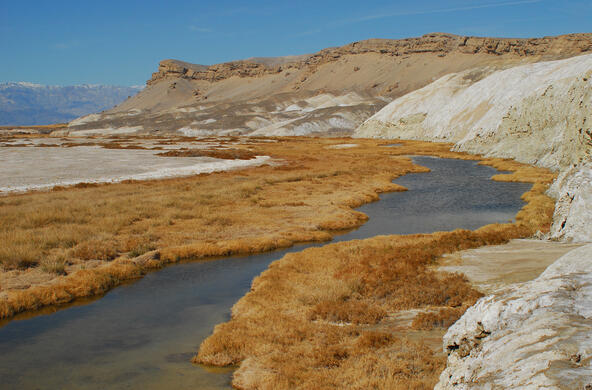Rising sea level from warming ocean temperatures and melting polar ice caps is an ongoing and well documented response to climate change. The City of Miami frequently experiences inundation by seawater in areas that were well above sea level just a few years ago. Tide gages show rising seas along nearly all of the East Coast, despite the efforts of some politicians to ignore it. The current rate of rise averages about 3.5 mm/yr or about 10 cm by 2050; however the rate is itself accelerating.
The rate of sea level rise is determined by several factors, which I have covered in earlier posts. Sea level rise along the East Coast is largely affected by the thermal expansion of the oceans, the amount of water in the oceans, and changes in the relative height of coastal land. Sea level is rising everywhere along the coast of North Carolina, but variations in the rate of rise are mediated by changes in the height of land. Lower rates of sea level rise are reported in New England, where the land is still rebounding in response to the weight of the last continental glaciation, so the rising water is less noticed.
In my last blog post, I discussed ocean currents that include a huge downwelling of waters in the North Atlantic, known as the Atlantic Meridional Overturning Circulation (AMOC). When the AMOC is at its peak, the rise in sea level along the east coast of the U.S. is lower than when the AMOC is weaker. In the absence of downwelling in the AMOC, it is almost as if the extra water pushes up against the coast of Maine, contributing to sea level rise in this region. Past changes in the height of sea level along the east coast are inversely correlated to estimates of the past strength of the AMOC. While current observations do not indicate a weakening in the AMOC, there is some reason to believe that this may be a likely future response to warmer ocean temperature and climate.
What causes sea-level to rise and how fast it is rising are of major concern all along the East Coast of the United States, where 2.4 million people live within 1 meter of the height of the sea. In coastal regions, direct damages to the economy from climate change could exceed 20% per year within the next 50 years. Some of these impacts will be agricultural and some will be due to higher energy use, but coastal damages from sea-level rise top the list.
Changes in the ocean currents and the rise of sea-level are an interrelated set of environmental impacts from climate change that should concern coastal residents and taxpayers everywhere.
References
Hsiang, S. and 11 others. 2017. Estimated economic damage from climate change in the United States. Science 356: 1362-1369.
Little, C.M. and 6 others. 2019. The relationship between U.S. East Coast sea level and the Atlantic Meridional Overturning Circulation: A review. Journal of Geophysical Research, Oceans doi: 10.1029/2019JCo15152.
Lozier, M.S., et al. 2019. A sea change in our view of overturning in the subpolar North Atlantic. Science 363: 516-521.
Piecuch, C. G. and 7 others. 2018. Origin of spatial variation in US East Coast sea-level trending during 1900 – 2017. Nature 564: 400-404.
Pilkey, O.H. and K.C. Pilkey. 2019. Sea Level Rise: A Slow Tsunami on America’s Shores. Duke University Press, Durham, NC







